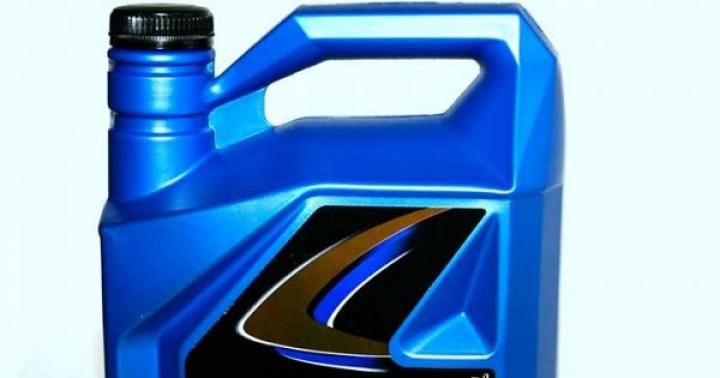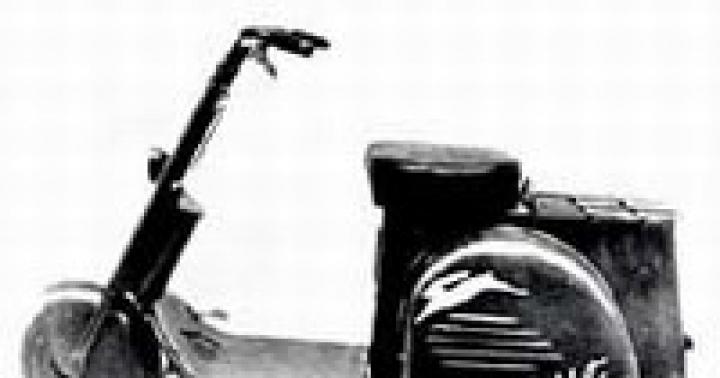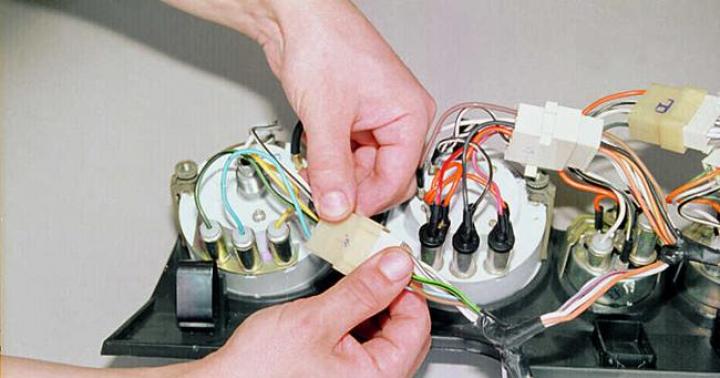Surely, many of you know that QuickShifter is now being installed on new motorcycles. The quickshifter is installed on some motorcycle models directly at the factory. It allows you to change gears without pressing the clutch. The roots go back to professional motorcycle racing, where every fraction of a second spent on the clutch during acceleration counts. The city is not a track, but nevertheless, I will tell you how to shift gears without a clutch on any motorcycle that is not equipped with a quickshifter. Possession of this skill will take you one step higher in communicating with your motorcycle to "you".
Rules for shifting gears on a motorcycle without squeezing the clutch
What's the point? In fact, the technology is painfully simple - during acceleration, you open the throttle, and at the moment of shifting, when you pull the gear foot, you just need to slightly cover the gas with a short movement. Having done this, you will be surprised how accurately and coolly the top gear will get up, and you will go, respectively, on the increased one.
How to shift gears without squeezing the clutch (the three steps below need to be done smoothly and quickly, see the video):
- turn off the gas
- shift the gear up
- open the gas
This method is absolutely safe, it does not harm the gearbox in any way, if you do everything clearly and correctly; the method is also convenient in that it becomes unnecessary to constantly pull the clutch handle when switching: they will be softer, without jerking at the start. The passenger in the back will especially thank you (if you are traveling together). At the moment of gear shifting, the motorcycle loses acceleration and the passenger, therefore, first "bites" you in the back, and with further acceleration by inertia, pulls back. When shifting gears without a clutch, acceleration occurs as gently and smoothly as possible, regardless of speed.
Remember this
The throttle cover method only works upward - that is, for raising the gear, unfortunately, it does not work downward. Do not try to downshift without a clutch, this can damage the gearbox!
Shifting gears without pressing the clutch Is a skill that is not easy to master. More precisely, it is not easy to learn how to do it correctly so as not to harm the gearbox and, in fact, the clutch. What happens when you squeeze the clutch? The load on the gears and shafts disappears, and you can safely change the gear. But you can switch without touching the clutch, the main thing is to do it right. What is it for? Here, everyone pursues their own goals. For racers on the track, clutchless gearshifts save the fractions of a second that can be critical, and for everyone else, it's a way to improve ride comfort. But in the second case, it works in the case of gear shifting up, not down.
It is possible to shift up the gear without the clutch, but it must be done with the throttle stick closed. Well, not completely closed, but it is necessary to press the gearbox foot, briefly dropping the gas. This action happens like this: get ready to change gear and release the gas with a short turn of the handle. At this moment, you need to shift the gear up. The nuance is that the very second when you release the throttle, the engine stops pulling the bike forward, and the load on the gearbox disappears. Accordingly, at this moment you can safely switch. If you do everything correctly, the moment of switching will occur very quickly and imperceptibly. In the case of downshifting, things are much more complicated. The fact is that you, switching down, thereby increase the engine speed, and the load does not disappear, but, on the contrary, increases. Thus, after switching down, you will feel a sharp jerk back, and this will not affect the state of the gearbox in the best way. Strictly speaking, you can shift gears without a clutch down too, but this requires remarkable skills to immediately open the gas immediately after shifting and prevent the engine from applying a sharp load to the gearbox. Experimenting, however, is dangerous - there is a risk of flying into a new checkpoint. Perhaps you should do without it?
Such a thing as a quickshifter stands apart:
 This kind of device allows you to save precious fractions of a second when changing gears. As you might guess, quickshifters are popular mainly among those who like to drive a sport bike around the track. For everyday driving, there is no need for a quickshifter, this is purely sporting tuning, and besides, it also requires skillful handling.
This kind of device allows you to save precious fractions of a second when changing gears. As you might guess, quickshifters are popular mainly among those who like to drive a sport bike around the track. For everyday driving, there is no need for a quickshifter, this is purely sporting tuning, and besides, it also requires skillful handling.
In general, it is worth learning the main thing: correct gear shifting without a clutch allows not only changing gears more smoothly, but also saving the resource of the clutch discs, and the wrong one can greatly harm the gearbox.
V Everyday life we have to constantly learn something new and master new specific knowledge. The driver of a car must have more than just knowledge of traffic rules and the ability to drive a car in normal mode. The car can break down at the most unpredictable and inappropriate moment.
If your clutch release mechanism breaks down, for example, on a rural road. What to do? It is not possible to repair it alone. And if there is no one in the area? Skills of shifting gears without using the clutch pedal will help here.
Using this non-trivial way of operating the gearbox, it is possible to reach home with a broken clutch release mechanism.
How to shift gears without a clutch?
The method is based on a simple physical principle of loosening the connection between two gears. If you reach such a state when the speeds of the drive and driven gears are equal, there comes a moment when they can be easily separated without harm to the mechanics of the gearbox.
Starting in a car without using the clutch pedal.
First of all, it is necessary to engage first gear with the engine turned off. Take a look around. If there is even the slightest danger of hitting an obstacle, etc., then postpone the start. If everything is clean, then lightly press the accelerator pedal to the floor and turn the key. The car should jerk off and start. After that, you can safely drive home in first gear.
Shifting gears from low to high
Of course, you can go in first gear, but you will not accelerate much in it. There is a technique for downshifting to upshifting without a clutch.
1. We accelerate in first gear
2. Slightly pull the shift lever towards you, i.e. to neutral
3. Release the eider pedal
4. Find the moment at which the resistance of the lever will be the least, and turn on the neutral gear.
5. Pull the lever towards you, i.e. into second gear. At the moment when the resistance acting on the lever is minimal, we switch to the second one.
6. Next, add gas. We accelerate to the second.
7. We dump the gas.
8. We bring the lever to neutral.
9. Press lightly towards third gear. When it starts to give in, turn on the third, etc.
Shifting gears from high to low
If the algorithm for upshifting is simple, then the reverse process will require a new trick - re-gasification. Here it is necessary to increase the revs in neutral gear. input shaft, i.e. throttle when the gear lever is in neutral and gently downshift without applying too much pressure.
Engaging reverse gear without clutch
It is extremely dangerous to engage reverse gear when the clutch is inoperative, but if the need arises nevertheless, the algorithm is completely similar to starting without using the clutch. We turn on the reverse gear and press the gas. The car will jerk back and start.
Often in everyday life there comes a moment when there is not enough knowledge and experience to get out of an emergency situation, when neither your repair skills nor knowledge of the vehicle operating instructions will help, you also need specific knowledge. Such a driver check it vehicle occurs during various breakdowns, far from service stations, somewhere on a country road. How to solve the difficult task of turning on the transmission in case of clutch failure, in the place of breakdown, where repair is impossible? Read our instructions.
First, an explanation of what the transmission method is based on when the clutch is inoperative. The technique is based on reducing the interaction between two gears that have nearly the same rotational speed. In this state, you can switch the drive gear to the driven gear without harm to the operation of the transmission. First, make sure there are no obstructions on the road ahead. Since when the engine is started, the car immediately starts moving. Make sure the transmission lever is in first gear before starting to start. Then start increasing the fuel supply by lightly pressing the accelerator pedal. The ignition is now turned on. Ideally, the engine jerks off and runs. You can reach the workshop in first gear.







Riding without a clutch is possible and not very difficult, but training is needed. The main thing is to learn to understand what works and how. It is necessary to align the angular speeds of the crankshaft and the input shaft, the gearbox to engage the gear. The function of the clutch is to separate them and connect them smoothly. Learn to feel and compare the crankshaft RPM and the speed of the car and then you can easily do without the clutch.
Manual transmissions are not in vain at the origins. They are simple in design, reliable, and until recently provided maximum fuel efficiency (now some robotic boxes more economical than mechanics with the same power unit). But no matter how reliable the tandem of the box and the clutch is, in the “skillful” hands of a person, even he is sometimes powerless.
TOP 6 common mistakes with manual transmission
Shifting gears without clutch
It sounds rather strange given the type of gearbox, but novices and drivers who have been driving for a long time often forget to depress the clutch when shifting.
The result is a strong crunch, and a quick realization of the mistake. At these moments, the box is experiencing unintended loads due to the fact that at the moment of switching the box is not disconnected from the engine, which means it is under load. Sometimes such pranks end in licking or, even worse, chipping off fragments of gear teeth. As a result, the mechanism "grinds" itself and the exit from a standing manual transmission is simply inevitable.
Depressed clutch
Many car enthusiasts systematically keep the clutch pedal depressed for a long time. For example, when they are standing at traffic lights or just stopped.

This, at first glance, a harmless action leads to increased wear of the clutch disc, but most of all "suffers" release bearing, which is tirelessly forced to rotate under load. As a result, it quickly becomes unusable (buzzing), as a result of which its immediate replacement will be required, because there is a risk that it will "fly apart" right on the go. By the way, to replace it, you will have to remove the box, which is not a very cheap pleasure.
Engaging reverse gear without a complete stop
A classic of the genre, the driver is trying to quickly turn around in the yard, in a hurry including first and then reverse gear. We hear an unpleasant rattle when we explicitly try to turn on the back one.

The reason is trivial, the pilot is trying to engage the rear, not performing a full stop. This has an extremely negative effect on the teeth of the reverse gear, which slowly deteriorate, due to their licking on one side. If this error becomes permanent, reverse gear from time to time it will turn on all the worse, into the flesh until it is completely out of order.
Downshift by two or more
Due to the fact that in the manual transmission the gear selection function is entrusted to the driver, there is a high probability of engaging the wrong stage. In cases with downshifts, this is especially dangerous. After all, if the speed of rotation of the wheels turns out to be higher than the maximum possible in the gear selected by the driver (cut-off), when the clutch is released, the wildest engine braking will occur. As a result, the gearbox and clutch can not only "get off", but the timing belt can jump over a couple of teeth in the engine (the chain is no exception, but less often), or even break (as a rule, expensive repairs).

In addition, with such a sharp engine braking, the driving wheels will slow down for a moment, incomparable to the speed of the car, which can cause a car to break off the trajectory in a corner, especially in winter.
If you operate a mechanic, you must know which gear the “top speed” is in, and avoid “wrong” downshifts.
Hand on the lever
Many drivers keep their hand on the gear lever when moving, as if on an armrest.

On the one hand, it seems to be convenient, on the other hand, it loosens the mechanism and “kills” the forks directly moving the clutches in the gearbox. Those who want to save the box should understand that during the ride the car fluctuates chaotically and the driver does not consciously hold on to everything on which his hands lie. As a result, the load on the lever is not so small, and the box loses its original "tightness"
Released clutch
As you know, the clutch is an integral part of the manual transmission. It participates in the process of shifting gears (discussed above) and "starting off" from a place. The most detrimental is the slipping of the clutch disc at the moment of start. Since the entire unit is very hot and elementary wear out due to friction. Some drivers do not know about this, they use the clutch incorrectly, which significantly reduces its service life.

For example, while standing on an incline in a tamper, they hold the car in place by not fully grasping the clutch (the clutch pedal is not fully released) or drive onto the curb / obstacle not due to inertia (low speed), as needed. And due to the moment when the clutch engages. Alas, the clutch will not last as long as it should. And the work on its replacement will result in a pretty penny, because you will have to pay not only for new parts, but also for dismantling the box.
Outcomes
Everyone decides for himself whether to pay attention to all of the above or not. On my own I will add that in view of design features, the mechanics itself is very reliable, and the only thing that can quickly "ditch" it is the driver's wrong actions. Keep an eye on your iron friend, and he will never let you down.
- , 16 Nov 2016


